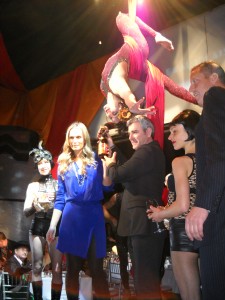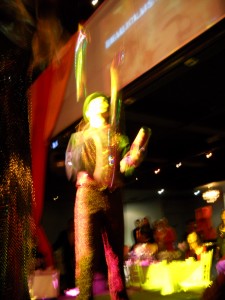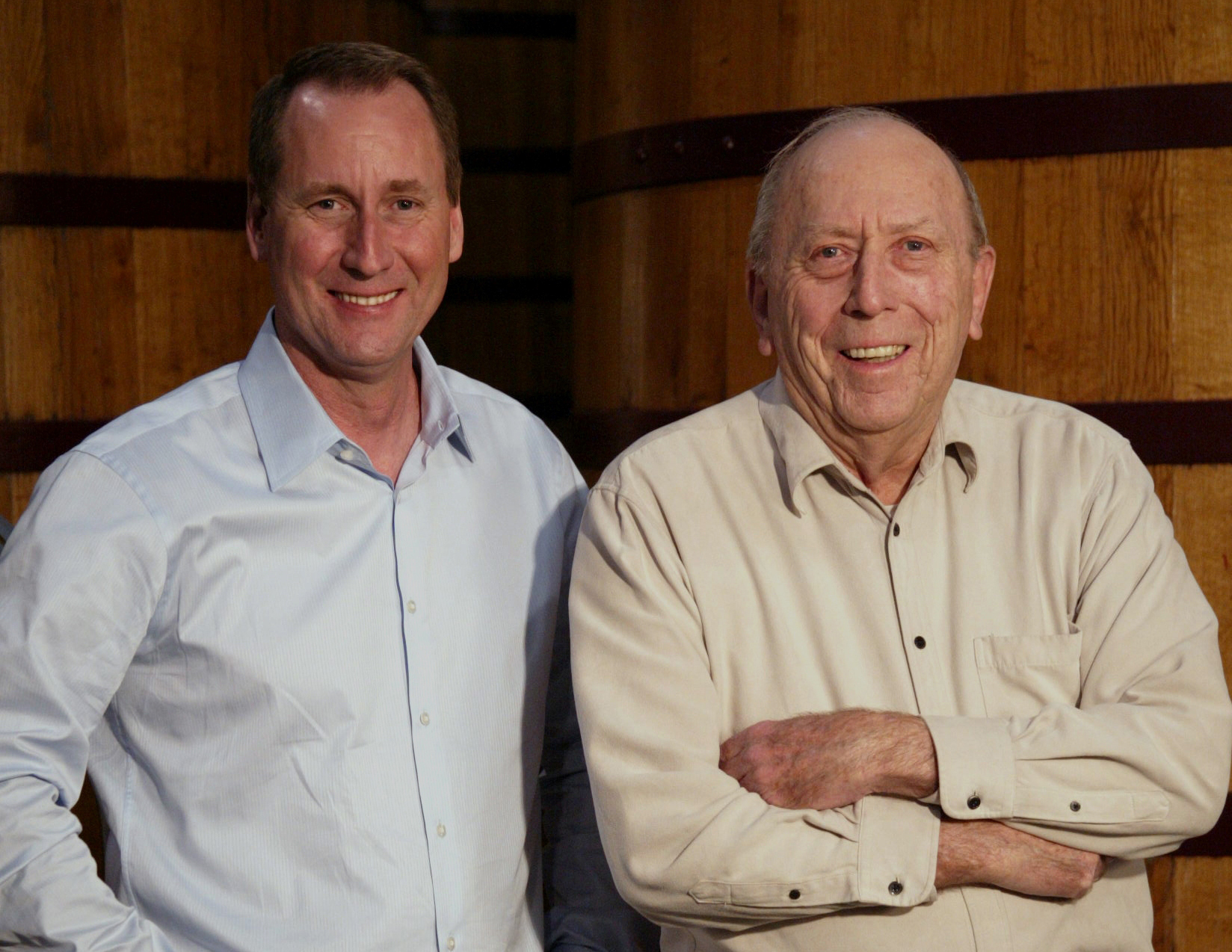What a winter this is shaping up to be. With snow, snow and more snow piling up (at least for us Eastcoasters), it’s enough to make one wish they were hibernating for the season. Fortunately, grapevines go dormant for the winter season, so they are slumbering through all of the storms.
Tracy is lucky enough to have a brief respite early this month as she heads to Miami for the Simply Italian: Great Wines South Florida Tour. Once there, she will be presenting to the trade and press on the U.S. Wine Market and on the Friuli Grave DOC.
Upon her return, we’ll be packing for our trip to New Zealand for which we depart in mid-February. Our itinerary includes visits to numerous wine regions on both the North and South Islands, so we’ll have a lot to share with you when we get back.
Drink wisely and well,
Tracy Ellen Kamens, Ed.D., DWS, CWE
CEO: Chief Education Officer
and
Jared Michael Skolnick
COO: Cork Opening Officer
Promoting Prosecco
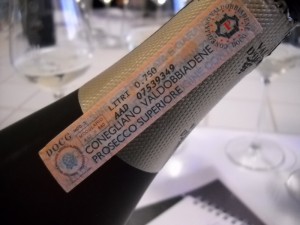
Prosecco Superiore DOCG
The twinkling lights of the holidays are all but a dim memory (or at least they should be – if you still have your Christmas lights up, it’s more than time to take them down). But, sparkling wines can continue to take their place at the table this month.
In fact, much like the aptly named dessert, Tira Misu, which is traditional to the Treviso province, Prosecco can be the perfect “pick me up” during these dreary winter days. An Italian sparkler from the Veneto region, this wine has recently been promoted to DOCG status – Italy’s highest quality tier.
While previously produced from a grape known as Prosecco, the proliferation of “Prosecco” wines diluted the quality within the market, with bottles from Brazil taking up space on the shelf next to the true Prosecco. Not surprisingly, there was much confusion for the consumer.
Accordingly, the restrictions on what is (and isn’t) Prosecco were tightened in 2009, taking effect with the 2010 vintage. Among the changes instituted, Prosecco itself now refers to a territory and the grape is now called Glera, of which a minimum of 85% must be used. If not produced with 100% Glera, the remaining 15% can be made up of Verdis, Perera, Bianchetta, Glera Lugna, Pinot Nero, Pinot Grigio, Pinot Bianco and/or Chardonnay.
Moreover, there are now two levels of Prosecco – Prosecco DOC and Conegliano-Valdobbiadene Prosecco Superiore DOCG. The former comprises nine provinces spread out among two regions (Veneto and Friuli), while the latter is confined to 15 communes within the Veneto’s Treviso province. The delimited area for the DOCG includes 4,500 planted hectares, 166 wineries and 3,000 growers.
In general, Proseccos are fresh and fruity, exhibiting the aromatic characteristics of the Glera grape. Produced via the Italian (aka Charmat) method of sparkling wine production, the floral and fruit aromas and flavors are retained, rather than masked through the use of stainless steel and minimal contact with yeast/lees (unlike the Traditional method). Refermentation is typically limited to 25-60 days, with an additional 30 days of bottle age, before release. Meant to be drunk young, the wines are increasingly being vintage-dated (most were previously non-vintaged) to provide the consumer with more information.
Wines may be labeled as being from Conegliano, Valdobbiadene or both, with Conegliano wines emphasizing fruit over floral notes and being slightly more structured. Conversely, Valdobbiadene wines show very developed floral aromas and more delicacy. Similarly to other sparkling wines, Proseccos will be labeled with a sweetness indication – Brut, Extra Dry, Dry or Demi-Sec – with the drier Brut style wines being more modern and the Extra Dry wines (which are only slightly sweet) among the most traditional.
Within the DOCG classification, look for wines labels as Cartizze, the “Grand Cru” of Prosecco Superiore, produced from a mere 106 hectares of vineyard located at the top of Valdobbiadene’s steep hills. In addition, Rive, a new classification introduced with the new regulations, indicates a wine that was hand-harvested from a single vineyard, with lower yields and produced in one of Prosecco Superiore’s subzones.
With a wealth of Prosecco wines from which to choose, nearly all of which will be quite pocket-friendly, it is easy to add some sparkle to your snow day and celebrate Prosecco’s promotion.
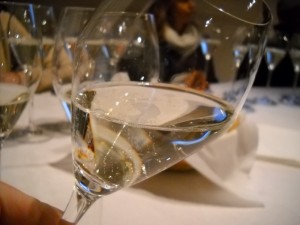
Prosecco in the glass
TASTING NOTES
Bel Canto di Bellussi, Valdobbiadene Prosecco Superiore DOCG, Extra Dry, Veneto, Italy, $13.00
Purchased by the Martellozzo family in 1993, Belllusi is presently run by Enrico, the third generation in his family to work in the wine business. With a fine perlage, this wine displays red apple and floral notes on both the nose and palate. Off-dry and light, it is quite elegant.
Bortolomiol, “Motus Vitae” Valdobbiadene Prosecco Superiore DOCG Brut Millesimato, Veneto, Italy, $NA
Run by four daughters and their mother, Bortolomiol carries on the determination and commitment of Giuliano Bortolomiol who not only founded the family business, but also was among the founders of the Prosecco Wine Fraternity in 1946. Dedicated to his memory, the Motus Vitae is dry with notes of apples and minerality, culminating in long length.
Val d’Oca, Uvaggio Storico, Valdobbiadene Prosecco Superiore DOCG Dry, Veneto, Italy, $24.00
A cooperative of 583 growers, Val d’Oca is the largest producer of Prosecco Superiore DOCG. The Uvaggio Storico, so named for its traditional blend of grape varieties – 85% Glera and 15% Verdiso, Perera and Bianchetta Trevigniana – mirrors the way Prosecco was made 20 years ago. With floral and pear aromas, the wine is off-dry with pear and floral flavors on the palate.
Villa Sandi, Valdobbiadene Superiore di Cartizze DOCG Vigna La Rivetta Brut, Veneto, Italy, $26.00
Produced from estate-grown grapes in the Cartizze area, Manuela Oregna, Villa Sandi’sExport Manager, explained that this wine was crafted in the Brut style to “underline the mineral aspect of the wine.” The winner of Italy’s Tre Bicchieri (3 Glasses) award, the wine shows beautiful floral and mineral characteristics.
Vincenzo Toffoli, Conegliano-Valdobbiadene Prosecco Superiore DOCG Extra Dry, Veneto, Italy, $19.00
A family-owned winery established in 1964, the winery is presently run by Santo Toffoli, his daughter and other members of the Toffoli family. Produced from 95% Glera and 5% Verdiso, this wine has medium intense aromas of peach and floral which persist on the off-dry palate, with vibrant acidity and long length.




